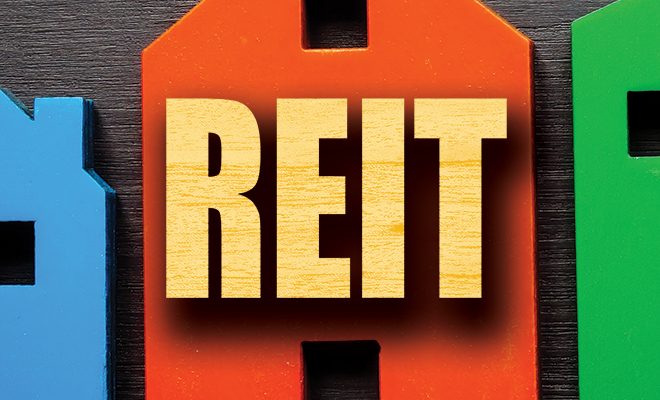
Real Estate Investing: The Options
Residential real estate is a dependable long-term investment if you’re willing to spend time and money on a rental property. An attractive alternative is an REIT, or real estate investment trust, which lets people invest in residential real estate without taking on homeowner responsibilities.
An REIT is a company that owns and operates income-producing real estate, making it possible for everyday investors to profit from property ownership. An REIT uses money contributed by a group of people to buy housing and rent it to tenants. The properties covered by a residential REIT include single-family homes, apartments, townhomes, condos, student housing and manufactured housing. When properties are bought and sold by an REIT, it’s always with the goal of improving the return to investors.
Like stocks and mutual funds, REITs pay dividends to investors; they are required by law to return 90 percent of their income. Investors can sell REIT funds for a profit when they increase in value. They don’t come risk free, however, because there’s no guarantee that an REIT’s assets will increase in value during the time your money is invested.
Some REITs are also in the housing development market. One example is The Peak Group, an REIT in the Dallas-Fort Worth, Texas, area, which builds homes to add to its investment fund. The company calls this the build-to-rent approach to property acquisition and believes it will become more popular as the millennial generation starts families while facing student loan debt and the lack of affordable housing for sale.
REIT vs. Direct Real Estate Investing
There are distinct differences between putting money into a residential REIT and buying real estate directly. When you invest in property such as a single-family home or apartment building, you make money from rent and property appreciation. You are also eligible for tax breaks for property management and maintenance costs and may get a break for property depreciation.
In exchange for these benefits, direct investing requires the investor’s time and energy. You must secure financing, find suitable tenants and deal with maintenance issues. Once you’ve bought some investment property, you’ve tied up your cash and it won’t be available if you need it in an emergency. Not keeping up with mortgage payments means you’ll default on the loan and may lose the property.
One of the biggest advantages of an REIT is that it allows many people who otherwise couldn’t afford it to invest in real estate. Experts note that you can invest in an REIT fund for as little as $500. REITs are stable investments that offer dividend yields of 5 percent or higher. The liquidity of REIT funds is another attraction. You can sell public REITs on an exchange like stocks.
Investors may experience some disadvantages with REITs. There are no tax breaks for money invested in an REIT, and fluctuating interest rates may affect the value of the fund. Also, if an REIT fund isn’t spread across several real estate markets, oversupply in one market can hurt occupancy rates and reduce rental income.
REIT Impact on the Single-Family Market
Although REITs may be beneficial for investors, many wonder if the rising popularity of REITs is distorting the market for single-family homes. Forbes Magazine notes, “The goal of the traditional home buyer is the manifestation of a dream, but for the REIT it’s something else. For them, it is all about the ROI.” Homeownership has long played a big part in the American dream. For many families, it’s the sole source of generational wealth. Do REITs pose a threat to that dream?
Home prices are rising across the nation. In many regions, first-time home buyers are being priced out of the market. As a result, demand for rental properties is also high. Many people must rent while they save for a down payment and build up their credit to qualify for a mortgage. Increasingly, the property they rent may be owned by an REIT.
In the real estate market, REITs have an edge over individuals. They can pay cash and above market value to make quick deals. REITs have created a new class of property owners: institutional investors who some accuse of widening the gap between poor and wealthy Americans.
On the other hand, although many feel REITs contribute to the concentration of real estate wealth in the hands of the few, they are a small slice of home ownership in America. The National Association of Real Estate Investment Trusts reports that REITs owned about 3 million residential properties out of a total market of 140 million properties at the end of 2020. In most areas, local ordinances that block new construction are a bigger threat to renters who want to become homeowners than REITs.
Sources: theatlantic.com, forbes.com, investopedia.com, nareit.com and rocketmortgage.com.







